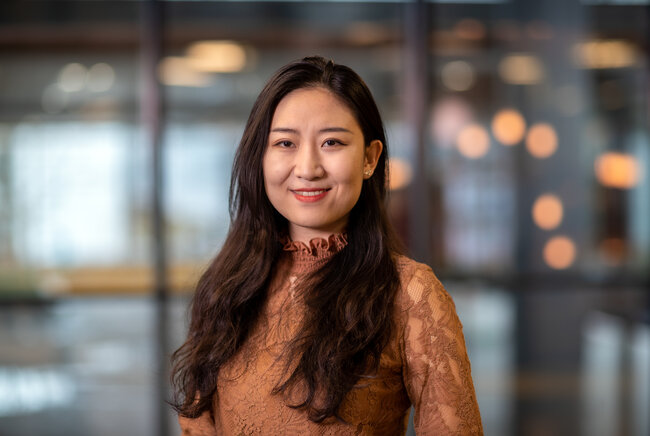Factors promoting a positive experienced neighborhood public space
Yuwen Zhao defended her PhD thesis at the Department of Built Environment on October 11th.

The worldwide urban densification trend brings challenges to residents' quality of life and well-being. Public spaces play a crucial role in shaping positive experiences and overall well-being of users. Yet, translating experiences such as feelings of safety, happiness, and stress into actionable design insights remains a persistent endeavor. Driven by the above background, the PhD research of Yuwen Zhao developed new insights into how public space green and design features contribute to users’ experiences and spatial choices. Zhao’s work developed an experimental approach that combines dynamic 3D environments and conjoint analysis.
The PhD research of Yuwen Zhao focused on small-scale neighborhood green public spaces, with which people interact on a daily basis but which has received relatively limited research attention until now. For her research, Zhao conducted several interrelated studies.
In a first study, Zhao compared two different visualization modes of interaction with a 3D virtual environment – a video-based and a self-navigation mode. It appeared that the choice of mode only marginally affects the measurement results and, because it is easier to implement, the video-based mode was applied in subsequent studies. Using this approach, peoples’ experiences in virtual public spaces were measured in virtual 3D environments that were varied in design and green features. Thereafter, using advanced statistical modeling procedures, the effects of the features on how the public space is experienced were analyzed.
Non-spatial factors and green public spaces
In the next study, Zhao investigated the importance of non-spatial factors —the current mood, personality traits, and situational context of the person — relative to the spatial factors (design and green features) for the experience of environments.
Finally, Zhao addressed the question of how varying levels of scale of green public spaces – a private garden, neighborhood green and urban green parks - affect subjective well-being of people in their daily life.
Key contributions
The findings from Zhao’s research offer several contributions to theory development and practice.
First, the new approach of combining dynamic 3D environments with conjoint analysis offers a practical method to involve citizens in the planning and design of public space (e.g., in neighborhood revitalization or urban development projects). As it allows the involvement of a large group of citizens and other stakeholders, this approach helps to effectively obtain feedback from a large participant group and to translate this into actionable knowledge.
Second, the review and comparison between different presentation modes offers a basis for researchers, policymakers, and urban designers to choose a suitable mode given the aim and context.
Using this novel approach, Zhao’s study has revealed key effects of planning, design, and green attributes of public space on users' experiences, which offers insights for the creation of urban environments that enhance individuals’ subjective well-being.
Title of PhD thesis: Factors promoting a positive experienced neighborhood public space: A Virtual Environment-based analysis. Supervisors: Theo Arentze, Pauline van den Berg, and Ioulia Ossokina.
Media contact
Latest news


